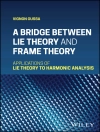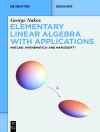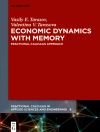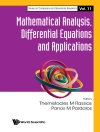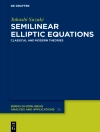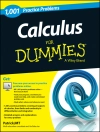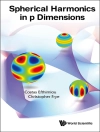A broad introduction to PDEs with an emphasis on specialized
topics and applications occurring in a variety of fields
Featuring a thoroughly revised presentation of topics,
Beginning Partial Differential Equations, Third Edition
provides a challenging, yet accessible, combination of techniques,
applications, and introductory theory on the subjectof partial
differential equations. The new edition offers nonstandard
coverageon material including Burger’s equation, the
telegraph equation, damped wavemotion, and the use of
characteristics to solve nonhomogeneous problems.
The Third Edition is organized around four themes:
methods of solution for initial-boundary value problems;
applications of partial differential equations; existence and
properties of solutions; and the use of software to experiment with
graphics and carry out computations. With a primary focus on wave
and diffusion processes, Beginning Partial Differential
Equations, Third Edition also includes:
* Proofs of theorems incorporated within the topical
presentation, such as the existence of a solution for the Dirichlet
problem
* The incorporation of Maple(TM) to perform computations and
experiments
* Unusual applications, such as Poe’s pendulum
* Advanced topical coverage of special functions, such as Bessel,
Legendre polynomials, and spherical harmonics
* Fourier and Laplace transform techniques to solve important
problems
Beginning of Partial Differential Equations, Third
Edition is an ideal textbook for upper-undergraduate and
first-year graduate-level courses in analysis and applied
mathematics, science, and engineering.
Зміст
1 First Ideas 1
1.1 Two Partial Differential Equations 1
1.2 Fourier Series 10
1.3 Two Eigenvalue Problems 28
1.4 A Proof of the Fourier Convergence Theorem 30
2. Solutions of the Heat Equation 39
2.1 Solutions on an Interval (0, L) 39
2.2 A Nonhomogeneous Problem 64
2.3 The Heat Equation in Two space Variables 71
2.4 The Weak Maximum Principle 75
3. Solutions of the Wave Equation 81
3.1 Solutions on Bounded Intervals 81
3.2 The Cauchy Problem 109
3.3 The Wave Equation in Higher Dimensions 137
4. Dirichlet and Neumann Problems 147
4.1 Laplace’s Equation and Harmonic Functions 147
4.2 The Dirichlet Problem for a Rectangle 153
4.3 The Dirichlet Problem for a Disk 158
4.4 Properties of Harmonic Functions 165
4.5 The Neumann Problem 187
4.6 Poisson’s Equation 197
4.7 Existence Theorem for a Dirichlet Problem 200
5. Fourier Integral Methods of Solution 213
5.1 The Fourier Integral of a Function 213
5.2 The Heat Equation on a Real Line 220
5.3 The Debate over the Age of the Earth 230
5.4 Burger’s Equation 233
5.5 The Cauchy Problem for a Wave Equation 239
5.6 Laplace’s Equation on Unbounded Domains 244
6. Solutions Using Eigenfunction Expansions 253
6.1 A Theory of Eigenfunction Expansions 253
6.2 Bessel Functions 266
6.3 Applications of Bessel Functions 279
6.4 Legendre Polynomials and Applications 288
7. Integral Transform Methods of Solution 307
7.1 The Fourier Transform 307
7.2 Heat and Wave Equations 318
7.3 The Telegraph Equation 332
7.4 The Laplace Transform 334
8 First-Order Equations 341
8.1 Linear First-Order Equations 342
8.2 The Significance of Characteristics 349
8.3 The Quasi-Linear Equation 354
9 End Materials 361
9.1 Notation 361
9.2 Use of MAPLE 363
9.3 Answers to Selected Problems 370
Index 434
Про автора
PETER V. O’NEIL, PHD, is Professor
Emeritus in the Department of Mathematics at the University of
Alabama at Birmingham. He has over forty years of experience in
teaching and writing and is the recipient of the Lester R. Ford
Award from the Mathematical Association of America. Dr.
O’Neil is also a member of the American Mathematical Society,
the Mathematical Association of America, the Society for Industrial
and Applied Mathematics, and the American Association for the
Advancement of Science.



